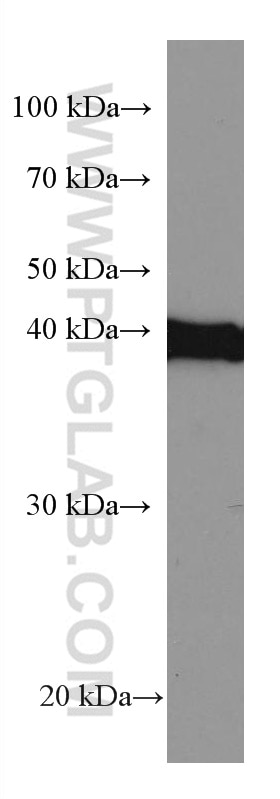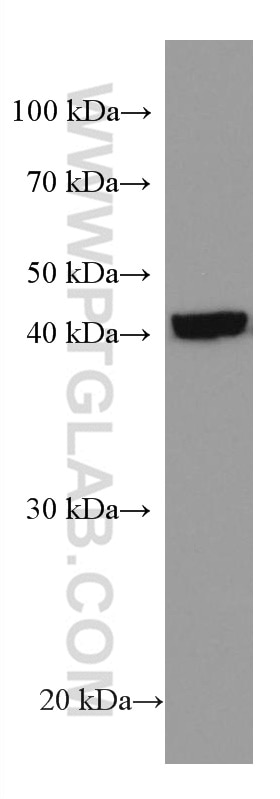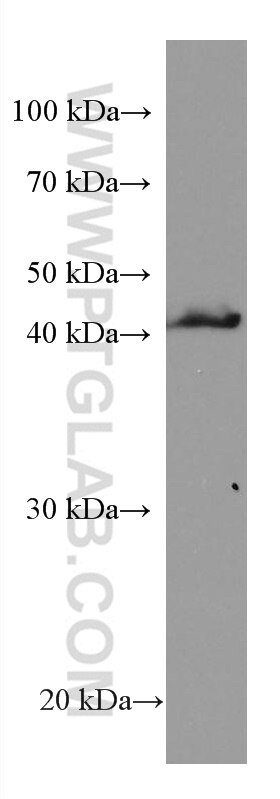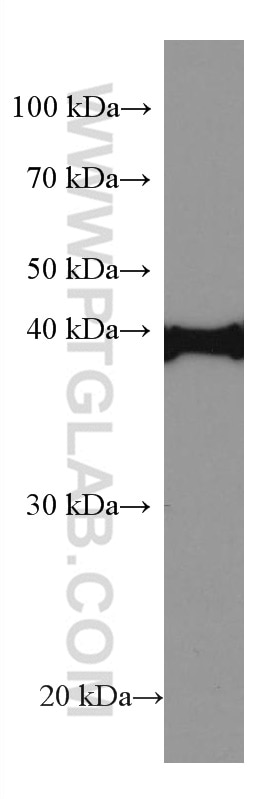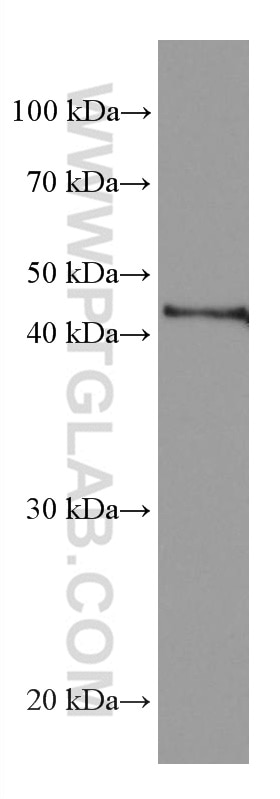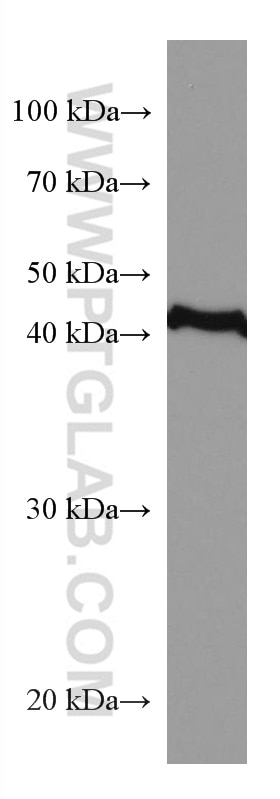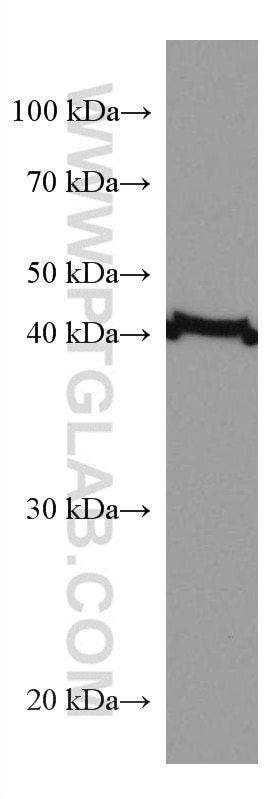Tested Applications
| Positive WB detected in | human placenta tissue, HepG2 cells, human spleen tissue, K-562 cells, L02 cells, LNCaP cells, TF-1 cells |
Recommended dilution
| Application | Dilution |
|---|---|
| Western Blot (WB) | WB : 1:1000-1:6000 |
| It is recommended that this reagent should be titrated in each testing system to obtain optimal results. | |
| Sample-dependent, Check data in validation data gallery. | |
Product Information
67593-1-Ig targets Mitoferrin 1 in WB, ELISA applications and shows reactivity with Human samples.
| Tested Reactivity | Human |
| Host / Isotype | Mouse / IgG1 |
| Class | Monoclonal |
| Type | Antibody |
| Immunogen |
CatNo: Ag26216 Product name: Recombinant human SLC25A37 protein Source: e coli.-derived, PET28a Tag: 6*His Domain: 1-44 aa of BC132799 Sequence: MELRSGSVGSQAVARRMDGDSRDGGGGKDATGSEDYENLPTSAS Predict reactive species |
| Full Name | solute carrier family 25, member 37 |
| Observed Molecular Weight | 40 kDa |
| GenBank Accession Number | BC132799 |
| Gene Symbol | Mitoferrin 1 |
| Gene ID (NCBI) | 51312 |
| RRID | AB_2882800 |
| Conjugate | Unconjugated |
| Form | Liquid |
| Purification Method | Protein G purification |
| UNIPROT ID | Q9NYZ2 |
| Storage Buffer | PBS with 0.02% sodium azide and 50% glycerol, pH 7.3. |
| Storage Conditions | Store at -20°C. Aliquoting is unnecessary for -20oC storage. 20ul sizes contain 0.1% BSA. |
Background Information
Mitoferrin (mfrn, SLC25A37), which is highly expressed in fetal and adult hematopoietic tissues, is a member of the vertebrate mitochondrial solute carrier family (SLC25) and is located on the mitochondrial inner membrane. It functions as an essential and high-affinity iron importer for the biosynthesis of mitochondrial heme and iron-sulfur cluster in vertebrate erythroblasts. Additionally, since it was identified as a major depressive disorder (MDD) risk gene, it is likely to be used as a potential biomarker of MDD diagnose.
Protocols
| Product Specific Protocols | |
|---|---|
| WB protocol for Mitoferrin 1 antibody 67593-1-Ig | Download protocol |
| Standard Protocols | |
|---|---|
| Click here to view our Standard Protocols |

